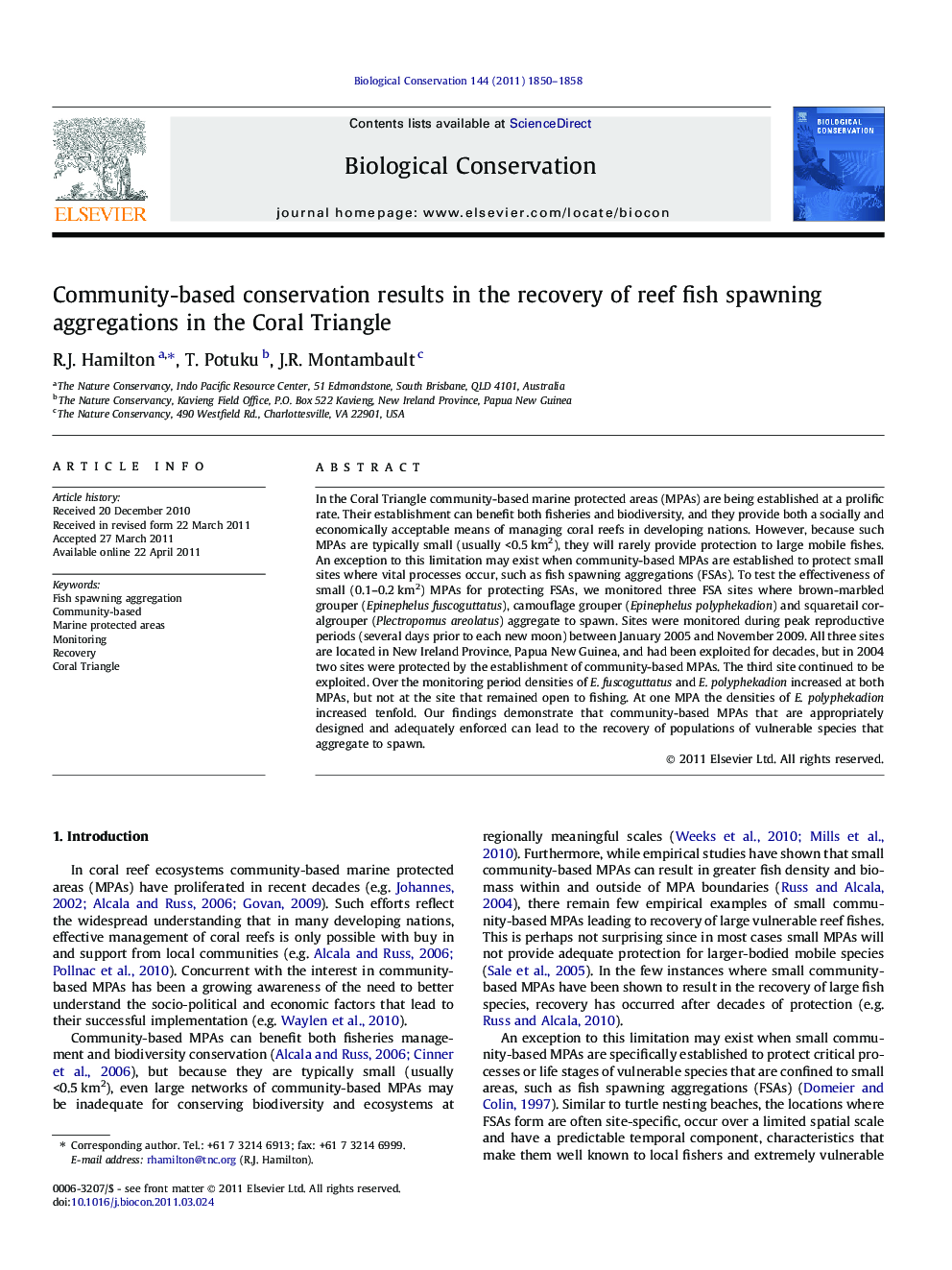| Article ID | Journal | Published Year | Pages | File Type |
|---|---|---|---|---|
| 4385748 | Biological Conservation | 2011 | 9 Pages |
In the Coral Triangle community-based marine protected areas (MPAs) are being established at a prolific rate. Their establishment can benefit both fisheries and biodiversity, and they provide both a socially and economically acceptable means of managing coral reefs in developing nations. However, because such MPAs are typically small (usually <0.5 km2), they will rarely provide protection to large mobile fishes. An exception to this limitation may exist when community-based MPAs are established to protect small sites where vital processes occur, such as fish spawning aggregations (FSAs). To test the effectiveness of small (0.1–0.2 km2) MPAs for protecting FSAs, we monitored three FSA sites where brown-marbled grouper (Epinephelus fuscoguttatus), camouflage grouper (Epinephelus polyphekadion) and squaretail coralgrouper (Plectropomus areolatus) aggregate to spawn. Sites were monitored during peak reproductive periods (several days prior to each new moon) between January 2005 and November 2009. All three sites are located in New Ireland Province, Papua New Guinea, and had been exploited for decades, but in 2004 two sites were protected by the establishment of community-based MPAs. The third site continued to be exploited. Over the monitoring period densities of E. fuscoguttatus and E. polyphekadion increased at both MPAs, but not at the site that remained open to fishing. At one MPA the densities of E. polyphekadion increased tenfold. Our findings demonstrate that community-based MPAs that are appropriately designed and adequately enforced can lead to the recovery of populations of vulnerable species that aggregate to spawn.
► We examined if small marine protected areas (MPAs) conserve fish spawning aggregations (FSAs). ► Aggregating groupers were monitored at three FSAs over a five year period. ► Densities of two large vulnerable groupers increased significantly at 2 MPAs. ► At the third FSA that remained open to fishing densities did not change. ► Small MPAs can improve reproductive populations of some large vulnerable species.
